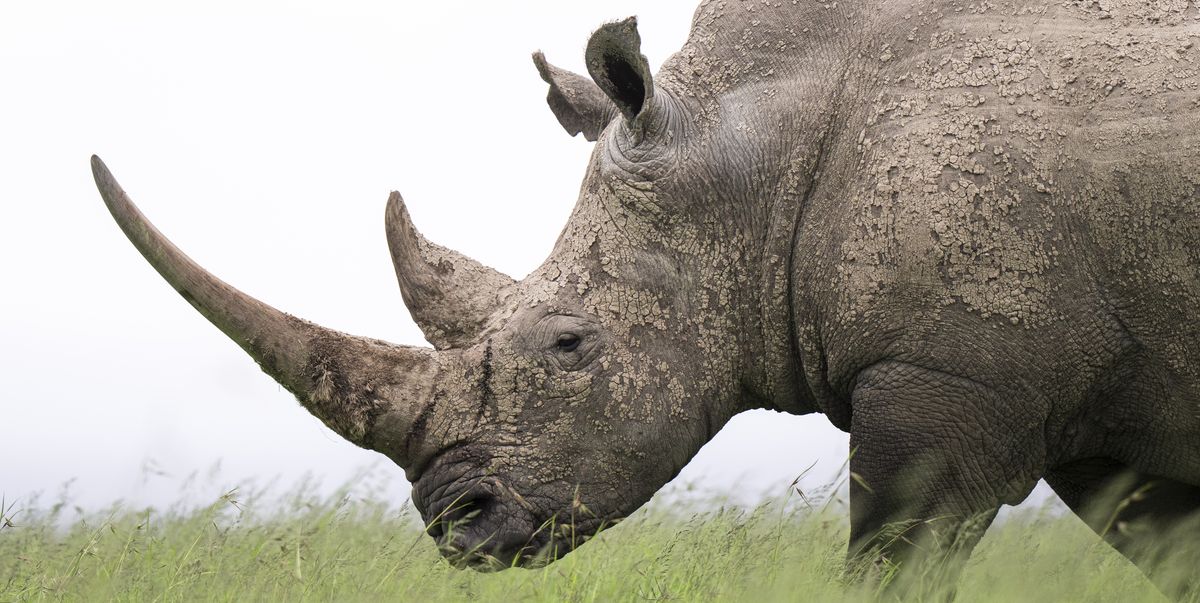Here’s what you’ll learn when you read this story:
The Rhisotope Project is embedding radioactive isotopes in the horns of rhinos in an effort to prevent poaching.Rhinos previously injected with the isotopes during Rhisotope’s test phase turned out unharmed, so the initiative has now officially launched.Even the tiniest amount of radiactive particles in a rhino horn can be picked up by detectors at airports, harbors and other international gateways smugglers may try to sneak past.
Toxic sludge and ghastly mutations often come to mind at the thought of anything radioactive. Despite the potential horrors of these substances exploited by sci-fi movies, they can also be used for something unexpectedly positive.
Scientists working on the cleverly named Rhisotope Project have begun work embedding radioactive isotopes in the horns of wild rhinos in South Africa. Far from making the rhinos glow in the dark (or morph into the Toxic Avenger), this is meant to turn away poachers and traffickers operating in the illegal rhino horn trade. Most rhino species are endangered; the Black, Javan and Sumatran rhino are all critically endangered, with numbers for the last two teetering in the double digits. There are only two Northern White Rhino individuals left, both females. They have all been hunted to near-extinction.
Related Story
The Southern White Rhino is the only species that is not yet endangered. While the largest populations of these rhinos roam the savannas of South Africa, they are still at a precarious near-threatened status. Poachers are after their horns, which are carved as decorations for the wealthy or powdered and used in traditional medicine. Scientists from the University of the Witwatersrand in Johannesburg are implementing change with their Rhisotope Project, which was in development for six years until the testing phase which launched last year with 20 rhinos. Radioactive material in the horns is meant to be detected by equipment at country borders when traffickers attempt to smuggle them through customs.
Led by Professor James Larkin of the university’s Radiation and Health Physics Unit, the Rhisotope project, which is a collaboration between Wits scientists, the International Atomic Energy Agency (IAEA), and top rhino conservation experts, is now fully operational. Rhinos which were part of the testing phase were monitored for six months to ensure the project was viable. In a video documenting their work, Larkin and his team can be seen carrying trunks labeled with bright yellow radioactive warnings. Tranquilized rhinos wearing eye shields then have small quantities of radioactive material injected into their horns.
“We have demonstrated conclusively, through the modeling that we’ve done and the other work, that we are doing no harm to these animals with the dose calculations,” said Larkin, the project’s Chief Scientific Officer, speaking in a wide-brimmed hat and sunglasses under the relentless South African sun.
When the test phase began in January, low levels of isotopes were embedded in the horns of twenty rhinos in the UNESCO Waterberg Biosphere Reserve, something of an oasis in the arid climate. Blood tests indicated there were no adverse effects. After culturing blood samples, the Rhisotope team use biological dosimetry, which gauges damage done to cells by radiation, including factors that can affect genetics. Formation of micronuclei in white blood cells is a sign of chromosomal destruction that was first tested for in the aftermath of the Chernobyl power plant explosion. Test results were negative in all of the test rhinos, which assured Larkin that the project could be scaled up.
The project already has the advantage of worldwide nuclear security infrastructure. With over 11,000 portal monitors, along with trained officials, equipped to detect radioactive material at ports of entry such as airports and harbors, horns that have been treated will make it nearly impossible for smuggling syndicates to evade arrest and prosecution. Tests on 3D-printed rhino horns embedded with the same isotopes proved that they could not make it past security devices. Monitors can pick up even the smallest trace of radioactive particles.
Related Story
Poaching remains an urgent concern in South Africa, where a rhino is killed for its horn every 20 hours, and 420 ended up as victims of poachers in 2024. Wildlife trafficking is the third largest form of organized crime worldwide. The Rhisotope Project hopes to eventually expand its program to include other endangered species sought by poachers, such as elephants and pangolins.
“The goal of the project really is to devalue the horns in the eyes of end users, to make the people who want to own a horn as a display of wealth, particularly to have it carved into, to persuade them that in fact this isn’t something they want,” Larkin said. “These animals are far too precious, far too rare to be used as symbols of wealth.”
Exclusive Pop Mech Digital Issues
Elizabeth Rayne is a creature who writes. Her work has appeared in Popular Mechanics, Ars Technica, SYFY WIRE, Space.com, Live Science, Den of Geek, Forbidden Futures and Collective Tales. She lurks right outside New York City with her parrot, Lestat. When not writing, she can be found drawing, playing the piano or shapeshifting.

